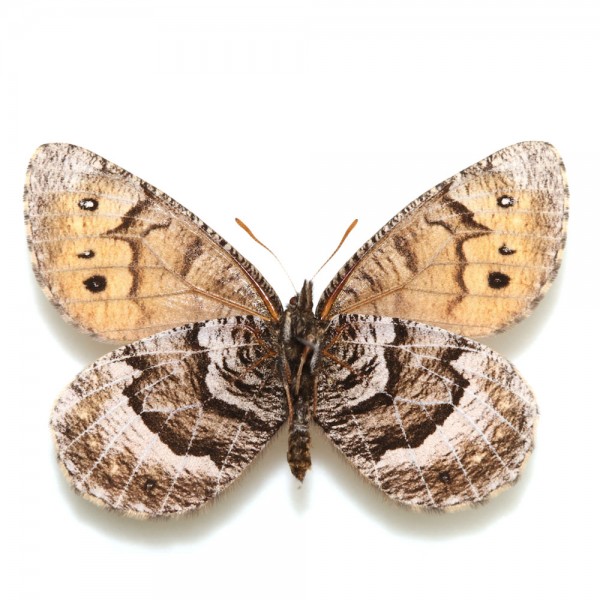By Ana Verayo, | March 21, 2016

The Tanana Arctic is the first new butterfly species to be discovered in Alaska.
Scientists have discovered a new butterfly species in Alaska that they believe to be a hybrid of an ancient creature, according to a new study. Apparently, this kind of butterfly was not seen in almost 30 years in its natural habitat.
This unique butterfly is known as the Tanana Arctic or scientifically called Oenesis tanana, as researchers consider this as probably the only butterfly species to survive the freezing environment of Alaska.
Like Us on Facebook
Biologists believe that the Tanana Arctic first appeared about 14,000 to 28,000 years ago during prehistoric times. Scientists also suggest that this species is the result of two butterfly species mating, the Chryxus Arctic and the White-veined Arctic butterfly. If these are all confirmed, this would mean that these three butterfly species thrived near the Arctic regions during the last Ice Age.
This new study can also confirm if the species have been the result of cross breeding during the last glaciation period, or during a time before the last Ice Age, shedding more light about ancient migrations of animals in the Arctic.
According to Andrew Warren from the McGuire Center for Lepidoptera and Biodiversity located at the Florida Museum of Natural History, past research suggests that during the last Ice Age, there were parts of ancient Alaska that were unglaciated that is called Beringia. In this strip of land that connected Asia and Alaska, this region apparently served as a sort of refuge where plants and animals thrived when the Ice Age was moving from eastward or southward in that region. The existence of the Tanana Arctic is a pivotal piece of evidence for this historical event.
Specifically, this region is home to the Tanana-Yukon River Basin which is where this new found species was observed, as this region also maintained its ideal climate for plants and animals during the last Ice Age.
In the past 60 years or so, scientists have already seen Tanana in various private and museum collections, however, they have not identified the insect as another separate species since the possess great similarities to the Chryxus.
In this new study, Warren took note of the significant differences such as markings and features when he studies butterflies that were obtained from their natural habitat. The wings of the Tanana are apparently darker than its cousin, which seems frosted.
There are many studies detailing the extensive hybridization of plants but rarely, these cases are observed on animals during prehistoric times. Researchers now plan to carry out more studies on the butterflies' genetic makeup to investigate whether these animals can be found in the eastern part of Alaska and Russia.
This new study is published in the Journal of Research on the Lepidoptera.
-
Use of Coronavirus Pandemic Drones Raises Privacy Concerns: Drones Spread Fear, Local Officials Say

-
Coronavirus Hampers The Delivery Of Lockheed Martin F-35 Stealth Fighters For 2020

-
Instagram Speeds Up Plans to Add Account Memorialization Feature Due to COVID-19 Deaths

-
NASA: Perseverance Plans to Bring 'Mars Rock' to Earth in 2031

-
600 Dead And 3,000 In The Hospital as Iranians Believed Drinking High-Concentrations of Alcohol Can Cure The Coronavirus

-
600 Dead And 3,000 In The Hospital as Iranians Believed Drinking High-Concentrations of Alcohol Can Cure The Coronavirus

-
COVID-19: Doctors, Nurses Use Virtual Reality to Learn New Skills in Treating Coronavirus Patients







